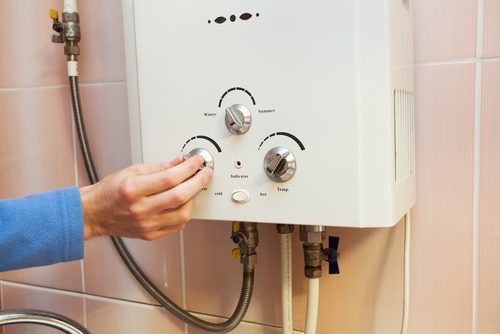Effective Strategies for Maintaining Your Home's Hot Water SystemHow to Maintain Your Home's Hot Water System Properly
Effective Strategies for Maintaining Your Home's Hot Water SystemHow to Maintain Your Home's Hot Water System Properly
Blog Article
Almost everyone maintains their own assumption about Tips For Maintaining Your Hot Water Heater.

Hot water is important for everyday convenience, whether it's for a revitalizing shower or cleaning recipes. To guarantee your hot water system runs efficiently and lasts longer, routine upkeep is vital. This post provides sensible suggestions and insights on exactly how to keep your home's warm water system to prevent interruptions and expensive repair work.
Introduction
Maintaining your home's hot water system could appear complicated, however with a few easy actions, you can guarantee it operates efficiently for many years to come. This guide covers every little thing from comprehending your hot water system to do it yourself upkeep ideas and understanding when to contact professional aid.
Relevance of Maintaining Your Hot Water System
Normal upkeep not only extends the life-span of your hot water system yet additionally ensures it runs successfully. Disregarding upkeep can lead to decreased performance, greater power expenses, and even premature failing of the system.
Indicators Your Warm Water System Requirements Maintenance
Understanding when your hot water system needs focus can protect against significant problems. Look out for signs such as inconsistent water temperature level, odd noises from the heater, or rusty water.
Comprehending Your Hot Water System
Before diving right into maintenance jobs, it's practical to understand the standard elements of your warm water system. Normally, this includes the hot water heater itself, pipelines, anode rods, and temperature level controls.
Regular Monthly Maintenance Tasks
Routine monthly checks can aid catch small issues prior to they escalate.
Purging the Water Heater
Purging your water heater gets rid of sediment build-up, improving performance and prolonging its life.
Checking and Changing Anode Rods
Anode rods protect against corrosion inside the container. Inspecting and replacing them when broken is important.
Checking and Adjusting Temperature Setups
Adjusting the temperature level settings guarantees ideal efficiency and safety and security.
DIY Tips for Upkeep
You can perform a number of upkeep tasks on your own to maintain your hot water system in top problem.
Looking for Leaks
Regularly check pipes and links for leakages, as these can result in water damage and greater bills.
Testing Pressure Relief Valves
Checking the pressure safety valve guarantees it functions properly and protects against excessive pressure accumulation.
Shielding Pipes
Protecting warm water pipelines lowers heat loss and can save power.
When to Call a Specialist
While DIY maintenance is useful, some concerns call for professional knowledge.
Complicated Problems Calling For Specialist Help
Examples include major leakages, electric issues, or if your hot water heater is continually underperforming.
Regular Professional Upkeep Conveniences
Professional maintenance can consist of comprehensive evaluations, tune-ups, and guaranteeing compliance with security requirements.
Conclusion
Regular maintenance of your home's warm water system is crucial for efficiency, longevity, and expense financial savings. By adhering to these tips and knowing when to seek expert aid, you can ensure a reputable supply of hot water without unforeseen interruptions.
How to Maintain an Instant Hot Water Heater
Before tinkering with your hot water heater, make sure that it’s not powered on. You also have to turn off the main circuit breaker and shut off the main gas line to prevent accidents. Also turn off the water valves connected to your unit to prevent water from flowing into and out of the appliance. 2. When you’re done, you have to detach the purge valves’ caps. These look like the letter “T” and are situated on either side of the water valves. Doing so will release any pressure that has accumulated inside the valves while at the same time avoid hot water from shooting out and burning your skin. 3. When the purge valves’ caps are removed, you have to connect your hosing lines to the valves. Your unit should have come with three hoses but if it didn’t, you can purchase these things from any hardware or home repair shops. You can also get them from retail stores that sell water heating systems. Read the user’s manual and follow it to complete this task properly. When the hosing lines are connected, open the purge port’s valves. 4. You should never use harsh chemical cleaners or solutions when cleaning your unit. Make use of white vinegar instead. It should be undiluted and you’ll probably use about 2 gallons. 5. Now flush your water heater. This task should probably take about 40 minutes. We can’t give you specific directions for this because the procedure is carried out depending on the type, model and brand of your heater. With that being said, refer to the user’s manual. 6. When you’re done draining the unit, you have to turn off the purge port valves again. Remove the hosing lines that you earlier installed on each of the water valves. Put the valve caps (purge port) back in their respective places and be very careful so as not to damage the rubber discs that are found inside these caps. 7. Now that everything’s back in place, check your user’s manual again to find out how to reactivate your water heating system. 8. Once it is working, turn one of your hot water faucets on just to let air pass through the heater’s water supply pipes. Leave the tap on until water flows smoothly out of it. https://www.orrplumbing.com/blog/2014/september/how-to-maintain-an-instant-hot-water-heater/

I came across that blog posting on Tips For Maintaining Your Hot Water Heater while surfing the internet. Sharing is good. You never know, you will be doing someone a favor. Thanks a bunch for your time. Don't hesitate to come visit our website back soon.
Request Free Estimate Report this page